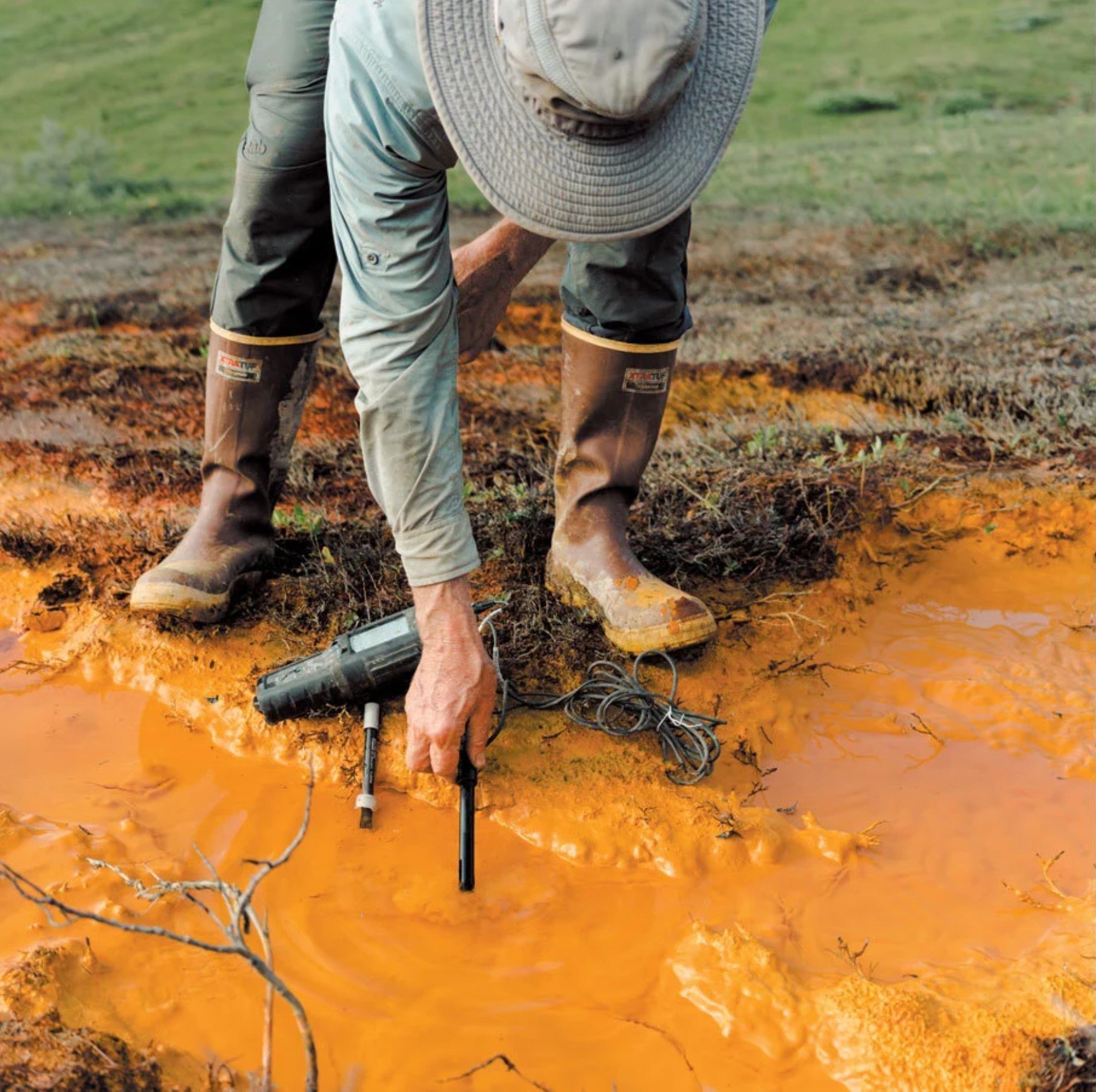The thaw of permafrost soil under a wetland allows bacteria to start reducing that oxidized iron, Cooper thinks. And reduced iron, unlike oxidized iron, is soluble in water. If it's carried by groundwater out into an oxygenated stream, it can once again be oxidized. When that happens, it will fall out of the water as “rust” and turn the stream orange. While digging trenches on marshy ground near Timber Creek this past August, Cooper and Dial found water as deep as 1.5 meters under the once frozen soil, as well as dirt the gray color of reduced iron. New groundwater flows have developed in the thawing earth, Cooper said, and they have “really awakened a lot of these geochemical processes that have been basically stalled out for 5,000 years because the ground's been frozen.”
We stumbled on another burn among the raking willow shrubs as we descended toward the creek, and the trickle from the lumpy black crust there was strongly acidic, too. Below the black spots, an orange slime covered the rocks of the Anaktok, rubbing off on the hands of Alexander Lee, an Alaska Pacific University philosophy professor who was helping to sample fish and invertebrates. A small stream coming down from the hills had a highly acidic pH of 3.5. “Wow, this is crazy,” Dial said.


